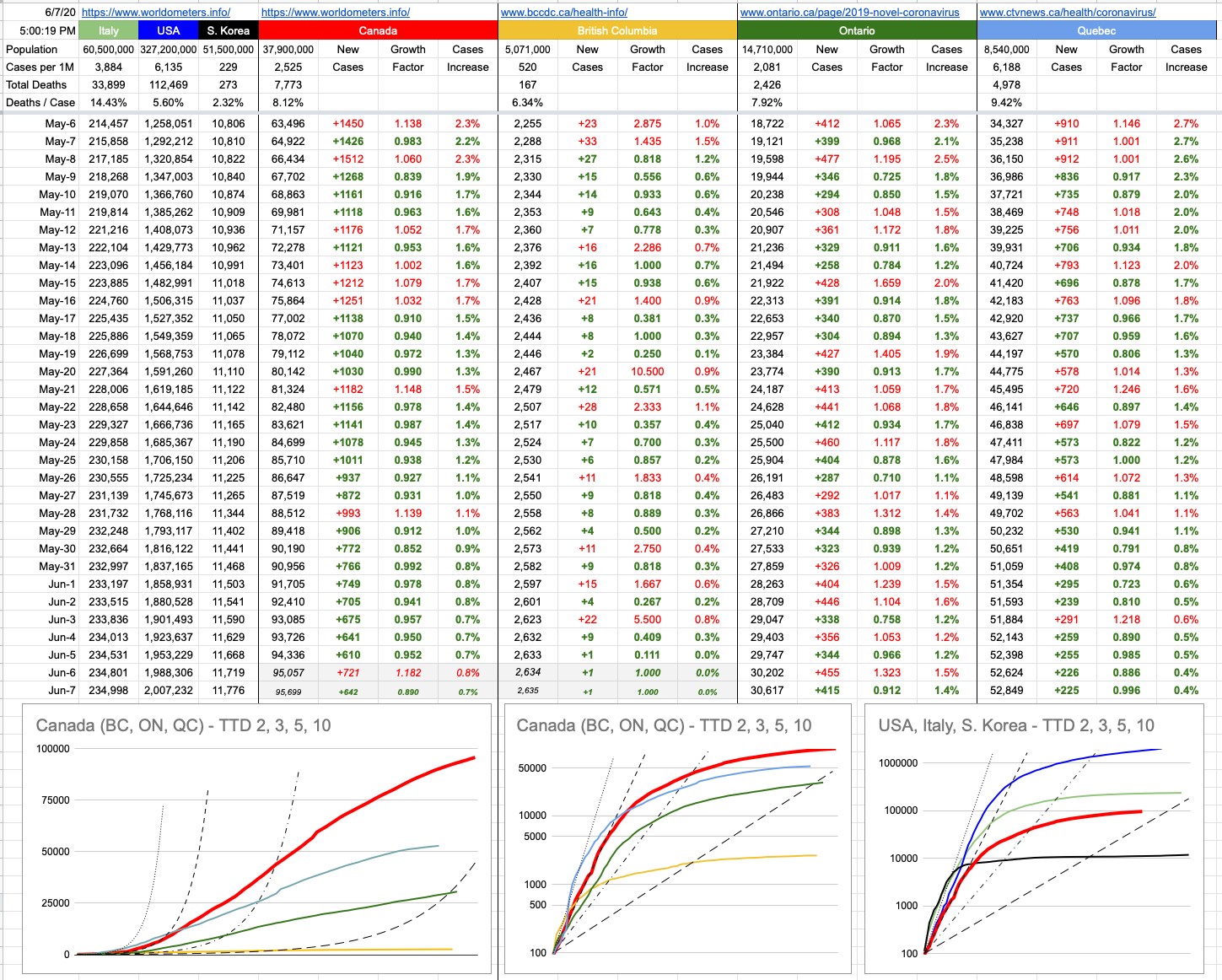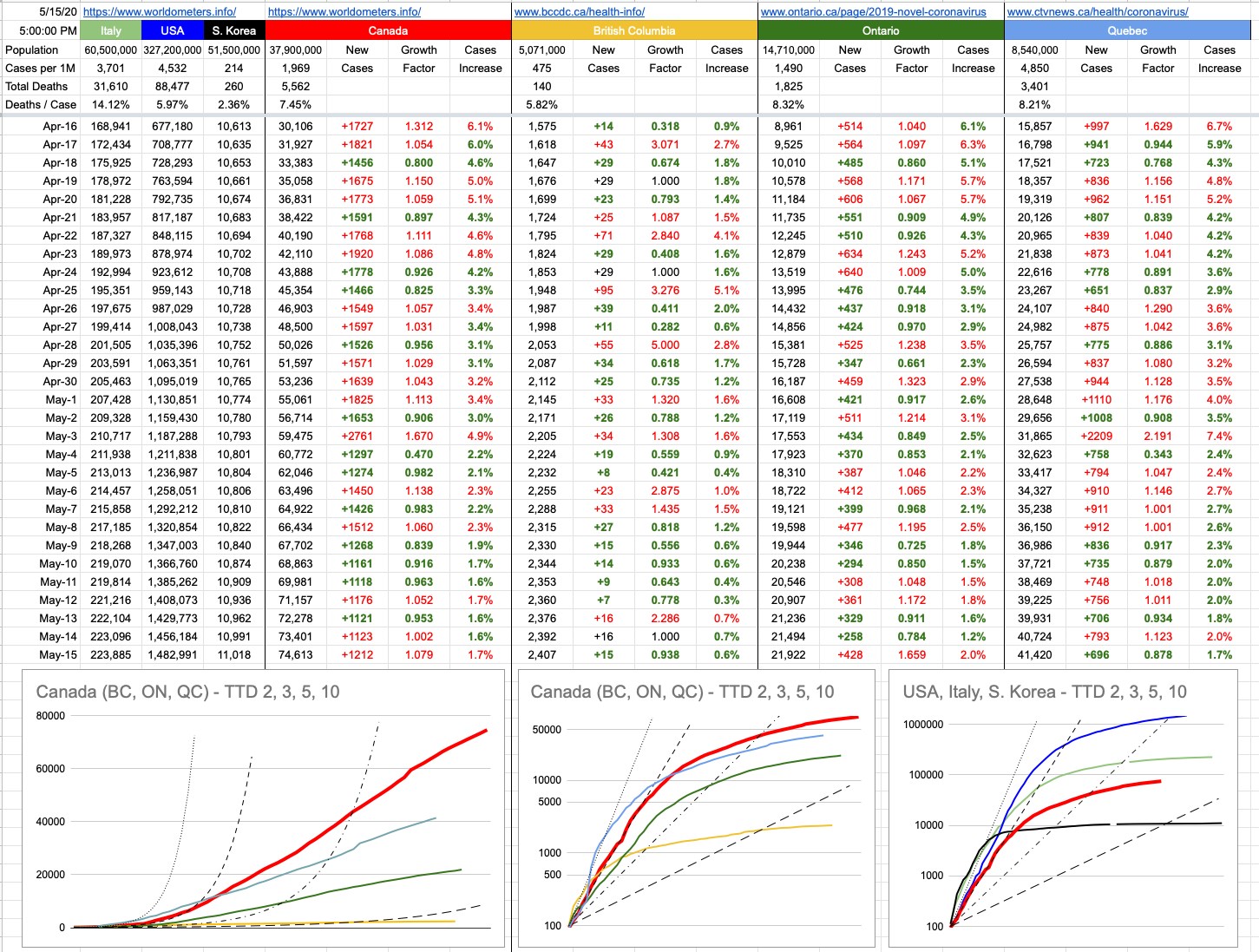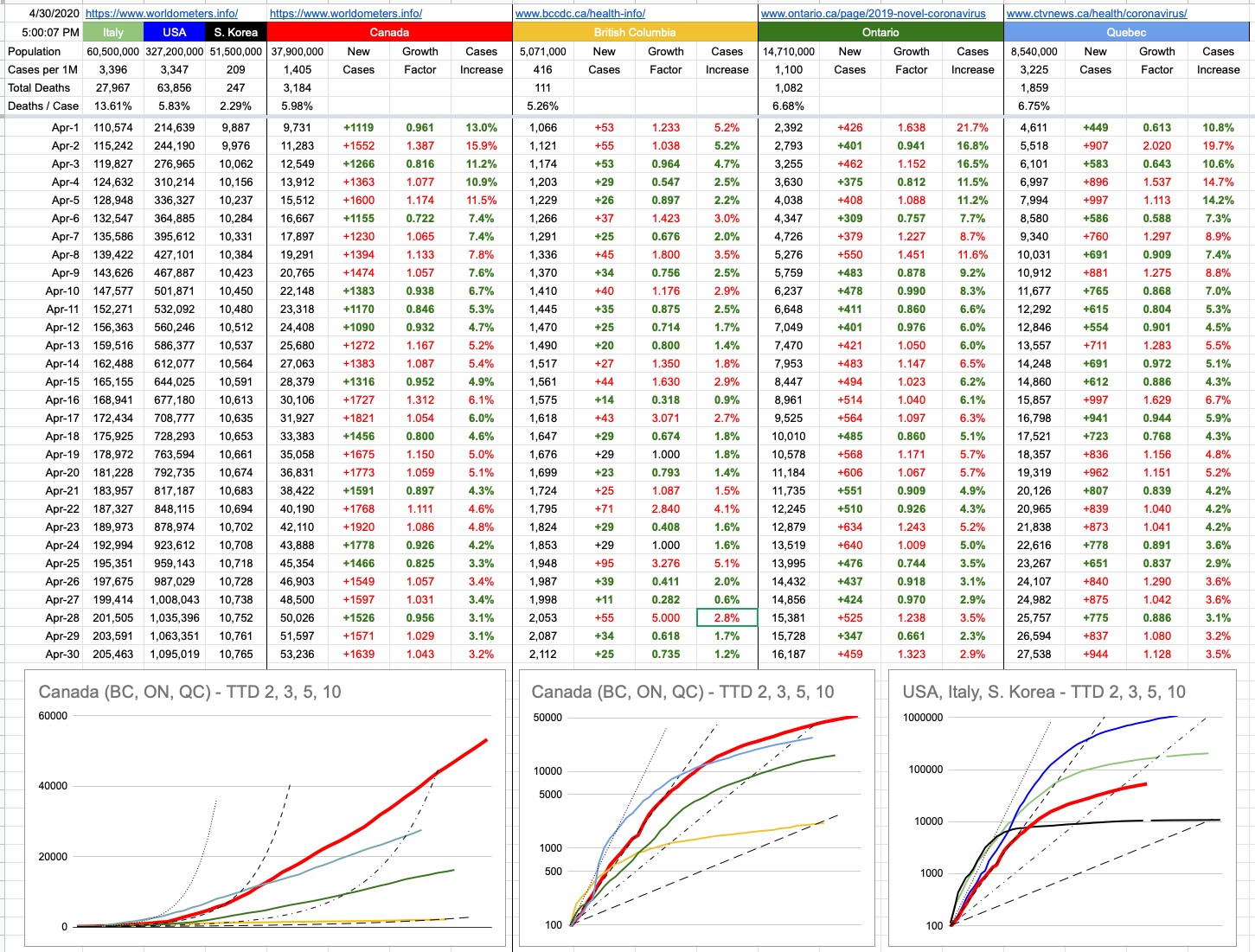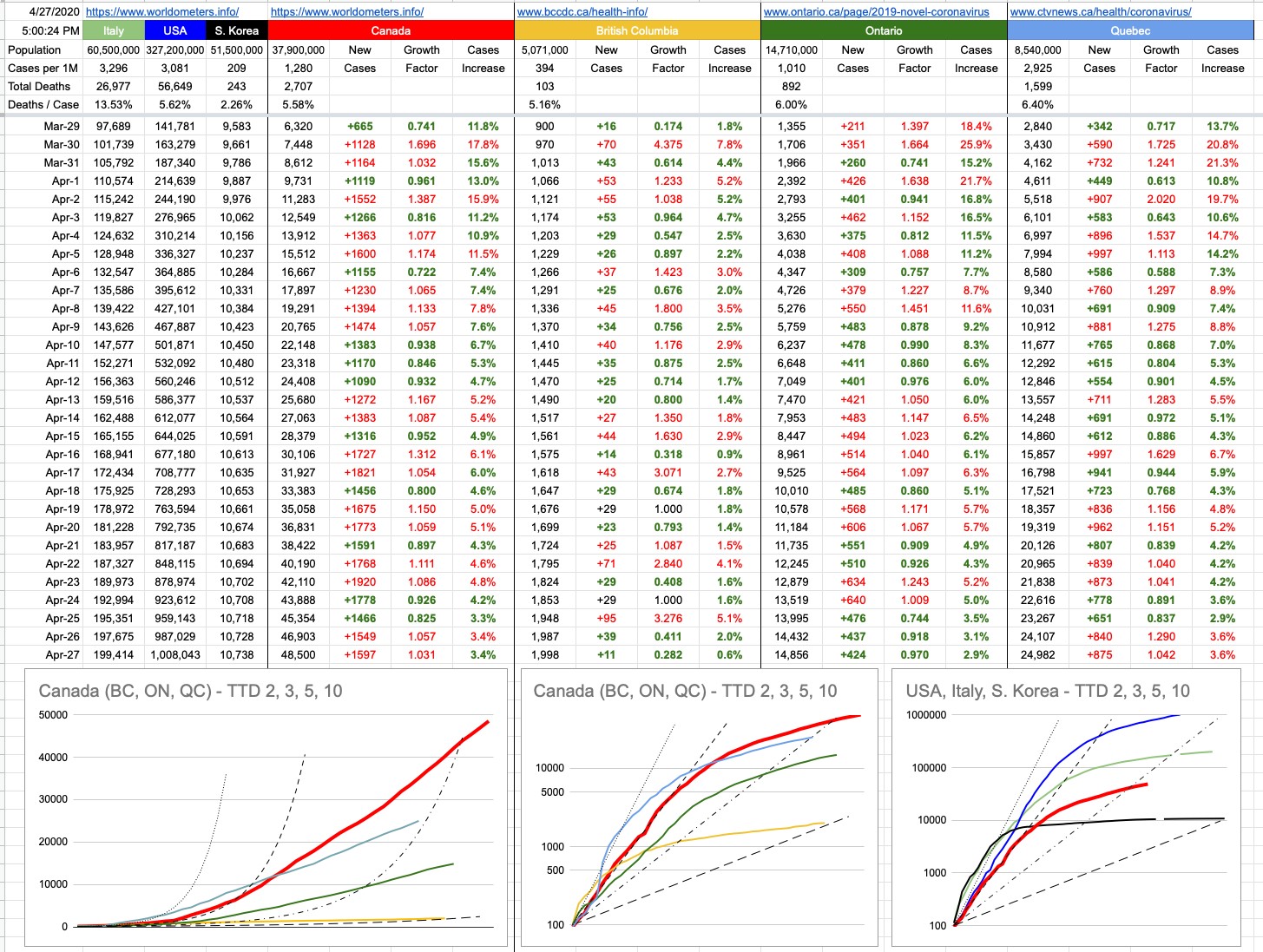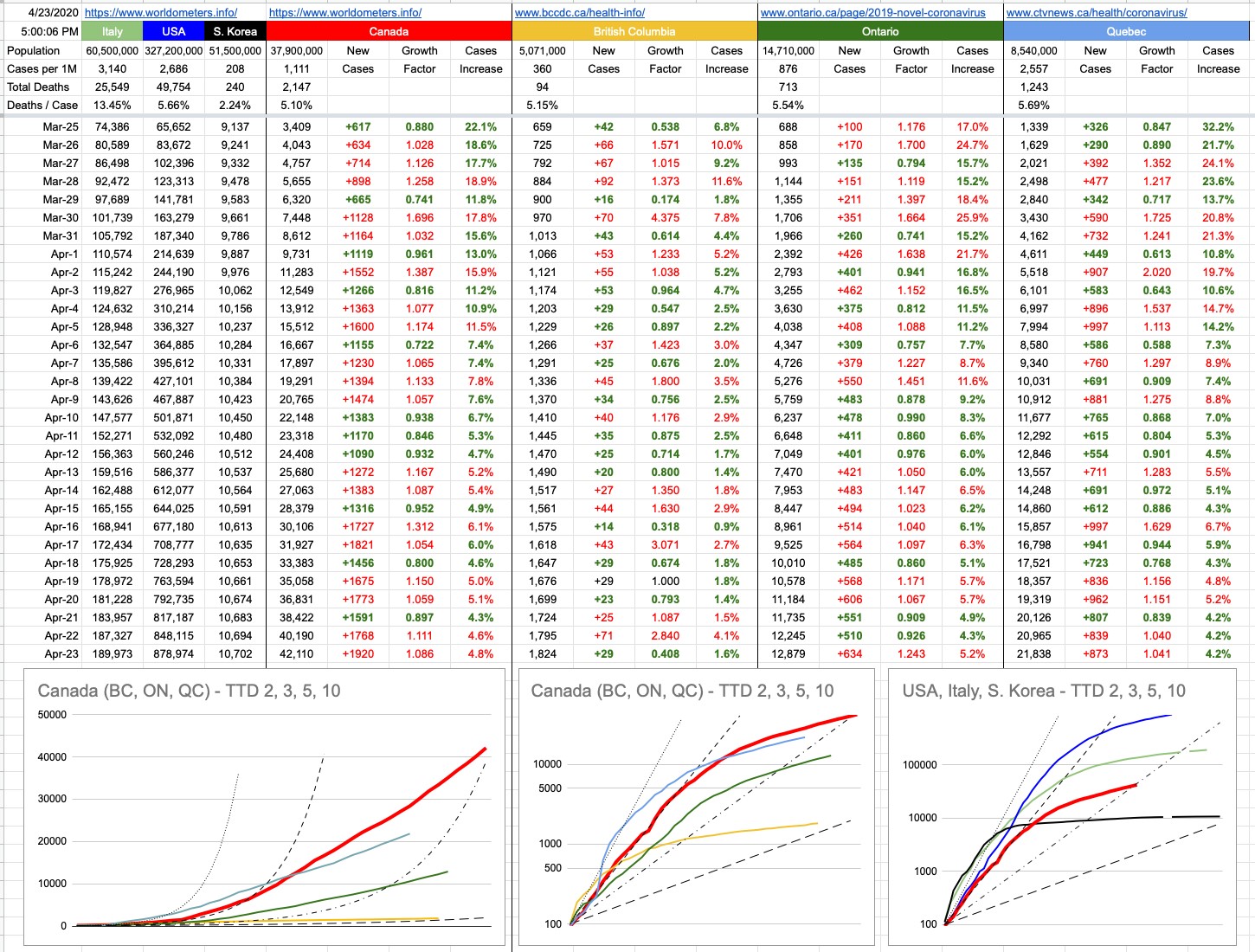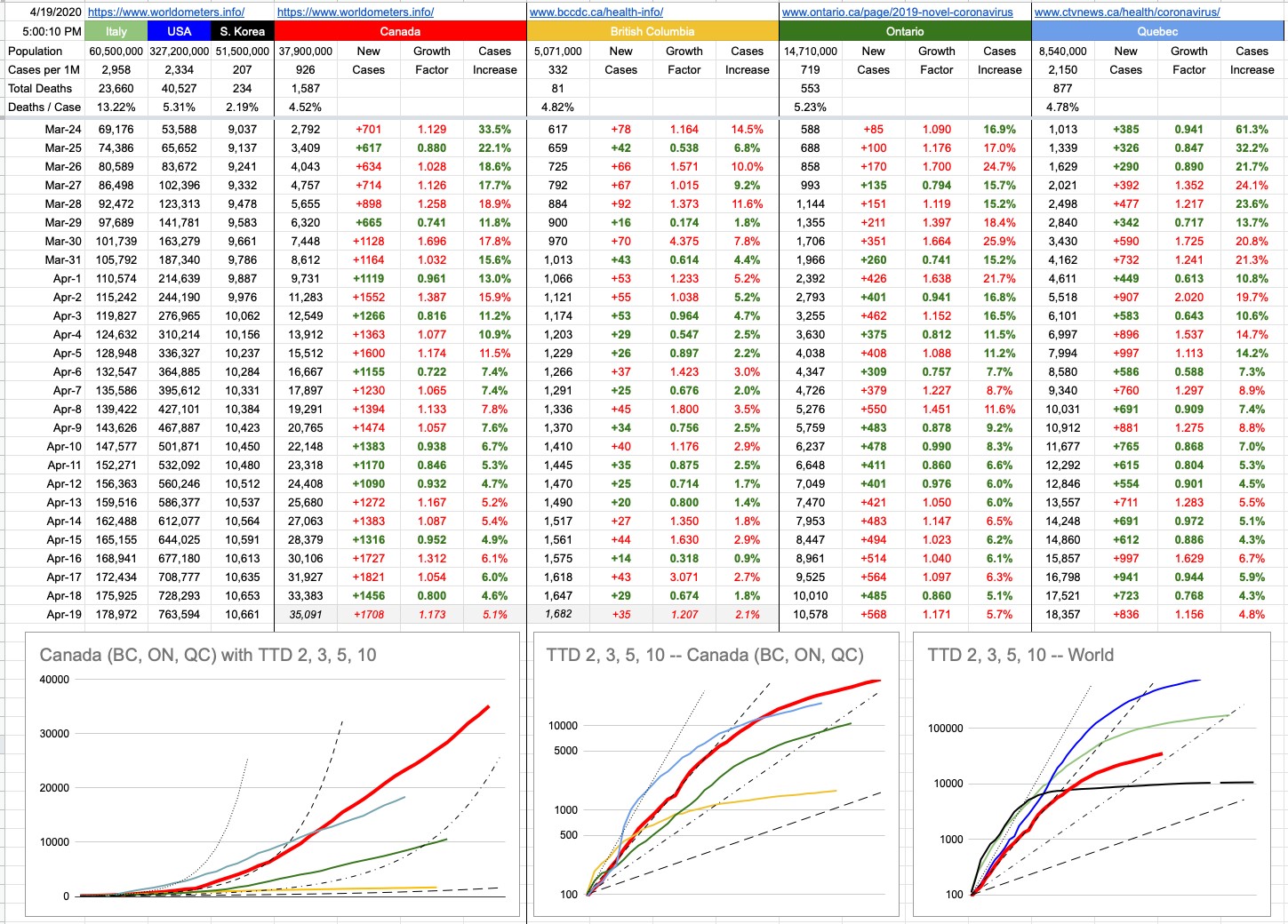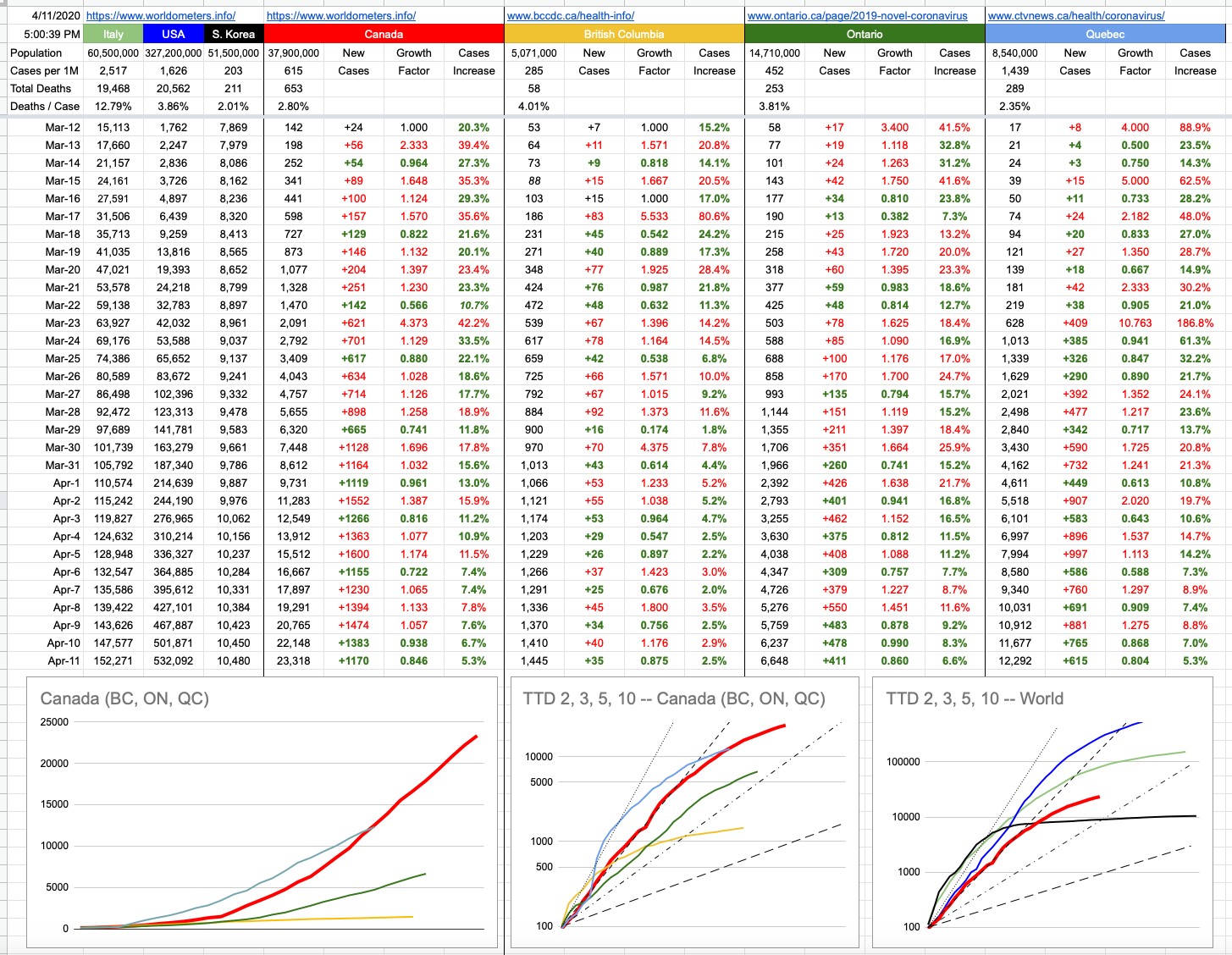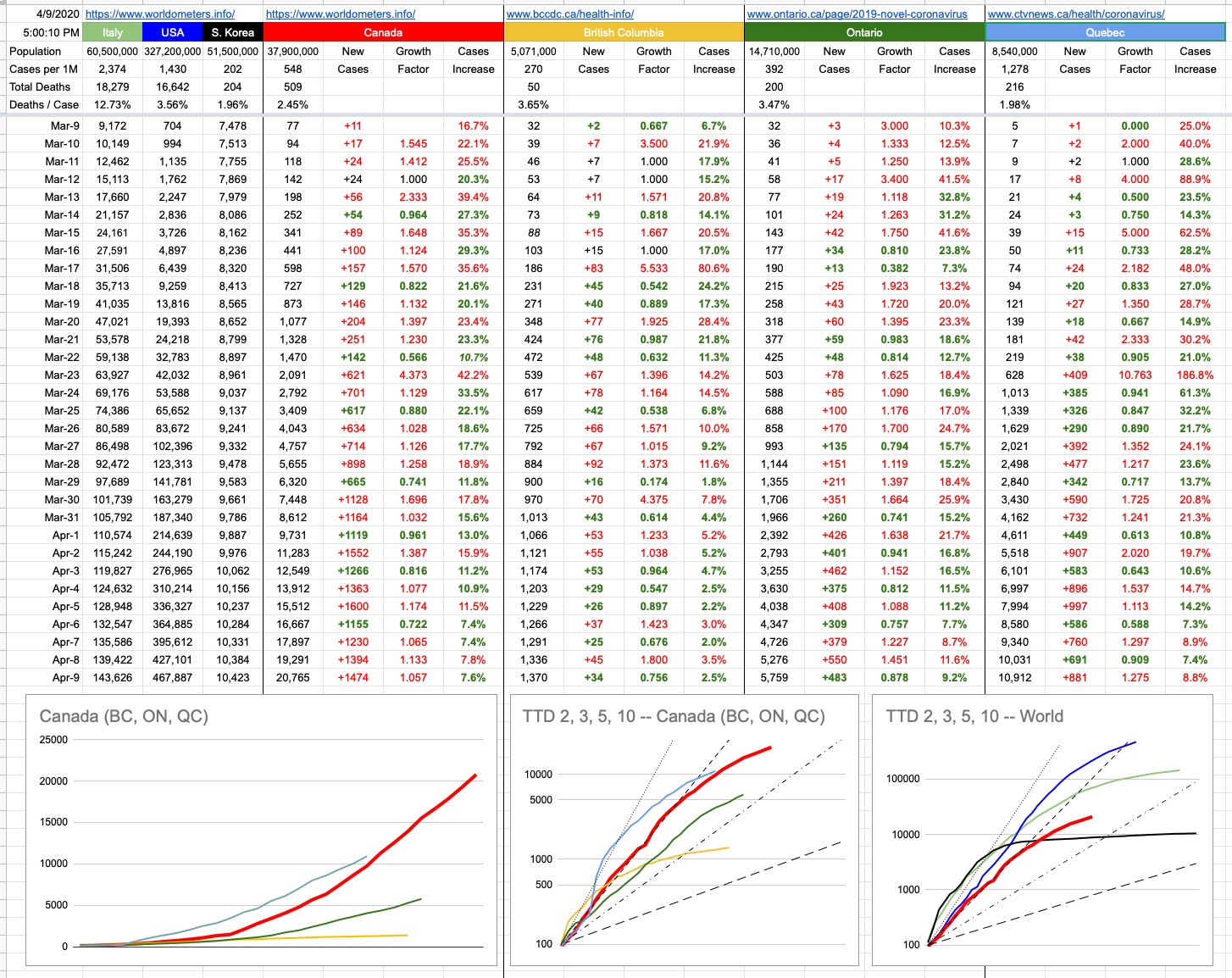Day 83 – June 7, 2020
Air travel has obviously been radically affected by this pandemic, but before everything went all to hell, it’s interesting to note that typically, there are so many planes (tens of thousands) flying around at any given moment, that it’d actually be impossible to ground them all; there’d be no room to park them. We caught a glimpse of that post 9/11 when, for a week, all air traffic over North America was stopped. Airports turned into giant parking lots — YVR was one of them, the taxiways and runways littered with an eclectic collection of livery. Another one of them was Gander, Newfoundland… a town with a population of around 10,000 people… and an airport that’s well-suited to emergencies, being the closest point between the U.S. and Europe… so when the call came in to every plane, “Get down now… anywhere… closest airport… NOW.” — every plane over the Atlantic, headed to the U.S… or every plane that had just departed, heading East… all of them set a course for Gander. The population of Gander almost doubled, for a week, when 38 planes carrying 6,700 people suddenly showed up.
And for a week, the air was clear — far clearer than it’d been for many decades, and it was an opportunity for scientists to gather data… to gather data that otherwise would never have been available. That was a very steep price to have paid for that data, one nobody would have wanted to pay. But since the opportunity presented itself, it obviously made sense to take advantage of it.
There’s the old saying… today is the first day of the rest of your life. And these days, until there’s a cure for this virus, today is also always the beginning of these rolling “5 to 14-day windows” where we get to see the after-effects of our activities.
We’ve come to learn a lot about the transmission of this virus, and how enclosed spaces for prolonged periods of time are a much bigger issue than being outdoors, being distant, and picking up the virus off a contaminated surface. Not to say that some of those things don’t pose a risk; they all might, but it differs… and effectively, the more exposed you are to the virus, both in time and volume, the worse it is.
The numerous protests going on around the world are a good example of these rolling windows, and everyone is keeping a close look at the outcome. It’s not an ideal experiment, but there’s plenty of data that’ll be made available; possibly very expensive data, as per the post-9/11 air quality numbers. In this case, the guinea pigs aren’t air particles… they’re human beings who decided to throw caution into the wind. While there are Covid-responsible ways of protesting… masks, outdoors, socially distanced… many people said to hell with it. We’ve of course seen many maskless crowded protests already anyway, so what’s the big deal?
Well — there will eventually be answers to that rhetorical question. George Floyd was murdered on May 25ᵗʰ, coming up now on two weeks. It’s hard to judge what effect the protests around the U.S. (and Canada) have had, especially south of the border where numbers weren’t slowing down to begin with. So, to be sure, they’re still rising… but are they rising faster than they otherwise might have? And to throw more variables into it, openings have been taking place in many different cities and states; how much is that contributing? Washington State was doing pretty well, but they had a significant spike a couple of days ago… a week after many new openings. Coincidence? Just a spike, not a trend? Time will tell.
Around here, time will tell as well — for now, it’s two straight days without real data… tomorrow’s update will backfill Saturday and Sunday.
View Original Post and All Comments on Facebook


